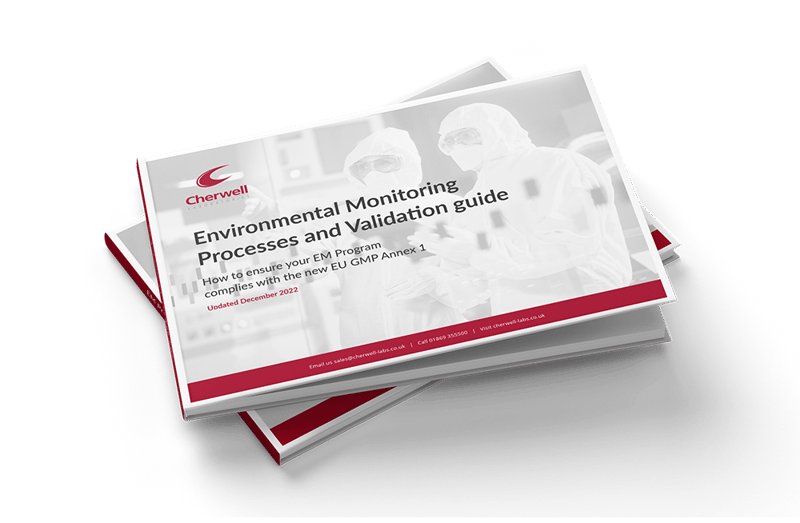The environmental monitoring that is undertaken needs to consider the media and method that will be deployed to monitor the bacterial levels that are present in the facility. The level of monitoring should be linked to the type of processes that are undertaken and the classification of the clean room being maintained.
Here we briefly look at some sampling methods and some points to consider as part of the monitoring of the clean room.
Contact Plates
Contact plates contain media which is filled slightly higher above the rim of the plate to allow the agar to be in direct contact with the surface it is sampling, with or without additions of neutralisers. It is important to consider media with neutralisers as this can impact on the ability to recover environmental bacteria. Plates are typically exposed to the area being sampled, with equal pressure and a defined period, for example 15 or 20 seconds. Contact plates give an indication on the level of microbial contaminants on surfaces within the clean room and is an effective sampling method for the monitoring of gowning worn by clean room operatives and understanding surface to surface contaminations.
Settle Plates
Settle plates are typically 90mm petri dishes filled with the minimum of 18ml media. They are used to give an indication of the level of microbial contaminants present in the air, which may settle on surfaces. Plates are typically left out for no more than 4 hours and can be used as a semi quantitative measurement, by calculating the number of microorganisms settling in a 4-hour period.
Neutralisers are not routinely added to these plates as they typically would not be coming into contact with disinfectants. However, consideration should be given to products that may contain inhibitory compounds to protect them from microbial contamination. These compounds may be present in the air and when settled on the plates reduce / inhibit growth of bacteria leading to a false account on environmentals within the clean room.
Active Air
Active air samples can be taken using either contact plates or 90mm plates and give an indication of the viable particles within the room by sampling a defined volume of air over a given time. As with settle plates these wouldn’t need to contain neutralisers however consideration should be given to any inhibitory compounds used in the monitoring area, along with any disinfectants used to clean the sampler which might get introduced to the surface of the plate and inhibit growth.
Swabs
Swabs can be useful for the monitoring of areas within a clean room which cannot be sampled using other methods mentioned here. However, the variability and use of these needs to be considered. Swabs might also be useful if there was an out of limit trend, where further monitoring is required in addition to standard monitoring methods, to aid root cause /corrective action.
Risks
With each of these sampling techniques there are risks associated that can affect the environmental monitoring results such as:
- Settle plates exposed for less than or greater than the time recorded.
- Contact plates not exposed to the entire surface during sampling.
- Contact plates undertaken directly after disinfectant / cleaning of the room flooding the plates with disinfectant.
- Incorrect media used for example media without neutralisers.
It is important to assess risks associated with environmental monitoring and periodically review these to ensure appropriate control measures are in place.
Summary
There are a number of considerations to think about when undertaking environmental monitoring and how the choice of method or choice of media can influence the perception on the control of the clean room. The individuals taking the samples will also play its part in the uncertainty of results so having defined protocols, with sampling plans and robust training in place will give confidence that these uncertainties are kept to a minimal. Irradiated plates should be used to ensure the very act of sampling isn’t contributing to contamination of the clean room or influencing out of trend results. Also consider the data integrity and validity of results, clear labelling of plates against locations sampled is crucial to maintain traceability. Ensuring the correct results are logged against the corresponding location will ensure correct action is taken in the right location when any out of trend result is identified.






